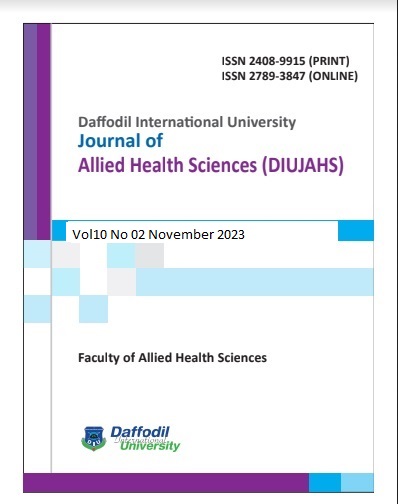Assessment of the Prevalence and its Determinants of Musculoskeletal Pain among Hand Loom and Power Loom Weavers in North Bengal, Bangladesh
DOI:
https://doi.org/10.36481/diujahs.v10i2.zjj8mw57Keywords:
Musculoskeletal pain, Muscle, Loom weavers, Lower Back Pain, Knee Pain, BangladeshAbstract
Loom weavers play a vital role in the economic development of Bangladesh. Due to their working load, they suffer from musculoskeletal pain. This study aimed to identify the prevalence of musculoskeletal pain and its determinants among handloom and powerloom weavers in the North Bengal area of Bangladesh. This study followed the cross-sectional method by using an open-ended and close-ended questionnaire. For sample size determination, the convenience sampling technique was adopted. A total of 500 participants were included in this study. Frequency analysis and the chi-square test were performed during data analysis using R
programming software. A total of 69.2% of respondents had musculoskeletal pain. Most of the respondents suffered from knee pain (46.8%). 42.6% of respondents suffered from lower back pain. 37.8% of respondents suffered from shoulder pain can be clubbed under pain at other sites. Most of them took treatment with medication. Age (<0.001) and number of working days(<0.001) were found to be significantly associated with the prevalence of musculoskeletal pain. Given the prevalence of musculoskeletal issues among weavers, it is imperative to ensure that they receive appropriate knowledge and interventions to enhance their quality of life. The
implementation of awareness programs on musculoskeletal pain should be undertaken by the government of Bangladesh as well as by non-governmental organizations (NGOs) and other relevant institutions.

